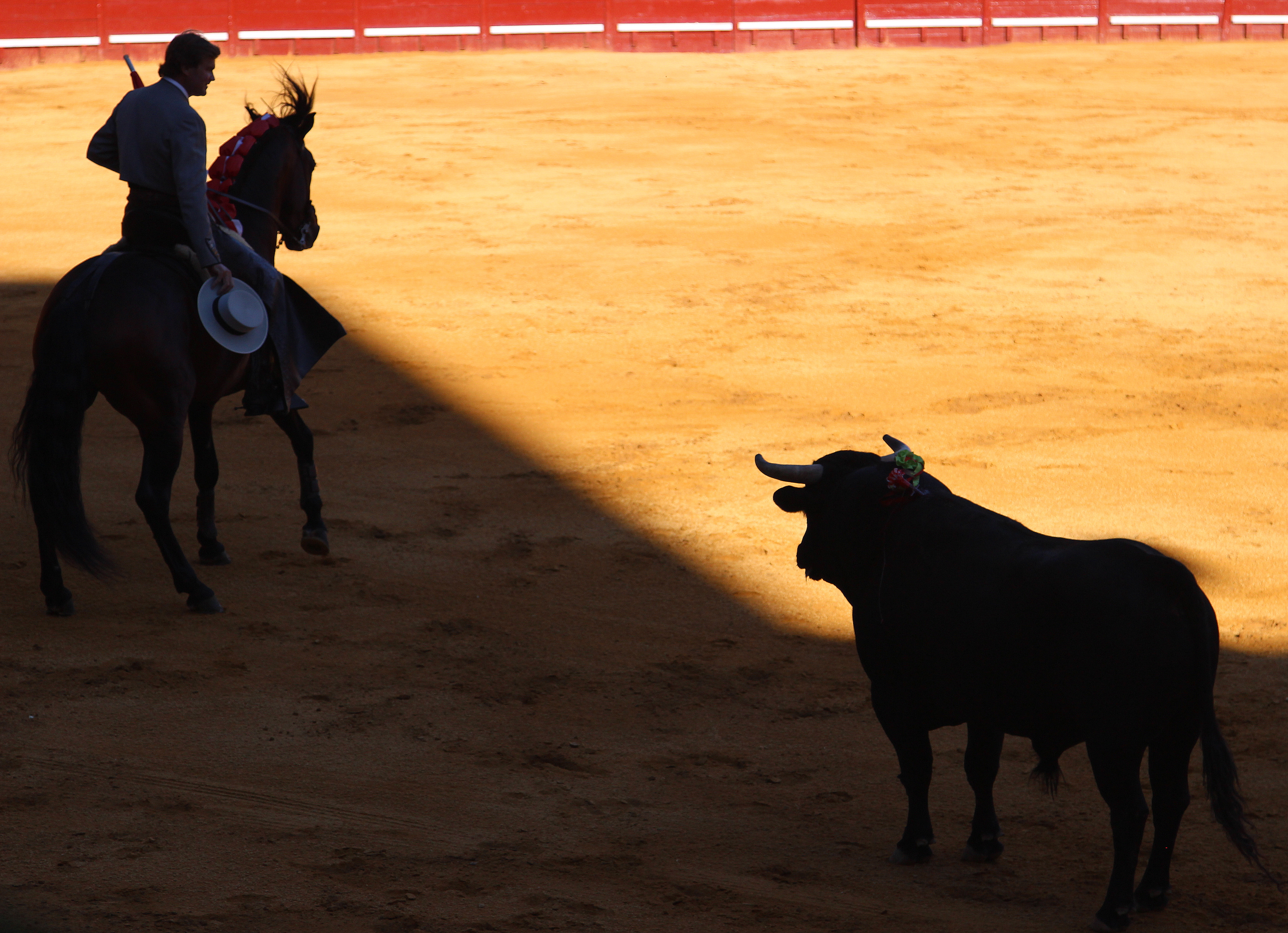 They had asked me if I wanted to go to a bullfight. Sure, I said. Why not? Won’t have an opportunity like that too often.
They had asked me if I wanted to go to a bullfight. Sure, I said. Why not? Won’t have an opportunity like that too often.
So there I was, sitting on the narrow concrete bleachers of the Jerez bullring, my knees dug into the back of a Spanish lady in front of me, much to her dismay, while I got a free massage from the patellae of a French gentleman behind me.
We had tickets for the shady side, and had some nifty striped cushions to take the edge off the unyielding seats, but it was still about 1,000 degrees. I could feel the clammy touch of perspiration sliding down my back, and it wasn’t all down to the heat. I felt keyed-up and nervous, just as I used to back in my days as a breaking news reporter when I knew I was about to see something gory or frightening.
The crowd pressed in and three men in red shirts began raking the sandy floor of the ring smooth. Ladies fanned themselves. A murmur of anticipation turned into a buzz. And we waited.
This was a corrida de rejones, a bullfight fought on horseback in which the bullfighter, or rejoneador, seeks to show his mastery over bull and horse. (Rejon is a traditional word for lance.) The fight falls into three parts, as with classic bullfighting. The bullfighter tries to provoke the bull into running after the galloping horse, including tricky moves like turning the horse around in front of the bull. He stabs long lances into the bull’s neck followed by shorter ones that are more dangerous to place. Finally, the bullfighter kills the bull using a sword designed to sever the nerves at the base of the head.
We waited. And then it began. The first rejoneador, Fermin Bohorquez, a fighter of renown, swept into the ring on a wave of applause. He was a blonde who sat tall in the saddle and wore chaps over dark pants, a sharply tailored gray jacket and a shallow, flat-topped white hat; outfits for the mounted bullfighters are much more subdued than the Bedazzler™ outfits worn by the cape-wielding toreros who fight on foot. Bohorquez, who doffed his hat to the crowd, had a pleasant, dimpled smile and seemed incongruously genial for a guy who was about to do what he was about to do.
The bull was released and rushed into the ring in a whoosh of black thunder and there was a pounding of hooves as Bohorquez urged on the bull, staying what seemed like mere inches ahead of the lowered horns as his horse executed footwork of a balletic delicacy.
“Ole, ole, ole,” shouted the crowd. Oh-lay-oh-lay-oh-LAY.

Around and around they went, bull and horse and man until the bull stopped in the middle of the ring, baffled into stillness.
If ever a bull had a look of “WTF?” on its face, that bull did.
It was at this point I began (foolishly, no doubt) to identify with the bull. The day I was laid off from my job of 23 years and 9 months, I caught sight of my face in a mirror and surprised just such a look.
The business of sticking in the lances, brightly decorated in primary colors, began. Soon the bull sported another decoration, a glistening red ribbon of blood running down his heaving sides. He was angry enough to charge ferociously; distraught enough to urinate copiously while doing it. Heat prickled at the back of my eyeballs.
Shit. I was going to cry.
I tried the old biting-the-inside-of-the-cheek trick, which worked not at all, but then thought of something better and picked up my camera. Magically, the drama shrank inside the sterile circle of the telephoto lens and my panic abated as I clicked away.
The great American writer Ernest Hemingway came away from his first bullfight in 1923 enthralled, writing in the Toronto Star:
[The bull] came out all in a rush, big, black and white, weighing over a ton, and moving with a soft gallop. Just as he came out the sun seemed to dazzle him for an instant. He stood as though he were frozen, his great crest of muscle up, firmly planted, his eyes looking around, his horns pointed forward, black and white and sharp as porcupine quills. Then he charged. And as he charged, I suddenly saw what bullfighting is all about.
My reaction was more along the lines of, “Maybe I should rethink that whole vegan thing.”
Hemingway, who would go on to write reams about bullfighting and turn Pamplona into a must-see for adventurous Americans, declared bluntly in the 1923 story that he was “not going to apologize for bullfighting. It is a survival of the days of the Roman Colosseum.” For my part, I am not going to campaign against bullfighting. It is breathtaking. It is barbaric. It is a raw display of testosterone. It is part of a long tradition. (Although a fading one. Catalonia, the region which includes the cosmopolitan city of Barcelona, banned bullfighting a few years ago.) And, of course, if you eat meat, as I do, there’s a case to be made that what goes on inside factory farms isn’t very pretty and goes on for a lot longer than an afternoon.
For this bull, the end came relatively quickly. After the ritual stabbings, the bullfighter aimed his sword for the neck. It didn’t work immediately and others prepared to rush forward, only to be stopped by Bohorquez who called out what appeared to be a version of, “I got this.”

Sure enough, he did. Bohorquez dismounted and, arms held wide, walked toward the animal with slow, deliberate steps. There was silence. And then, inexorably, the bull went down on one knee, then two, and then — it was over. A retrieval crew grabbed the dead animal and dragged it unceremoniously out of the ring.
Then the next bullfighter galloped in.


